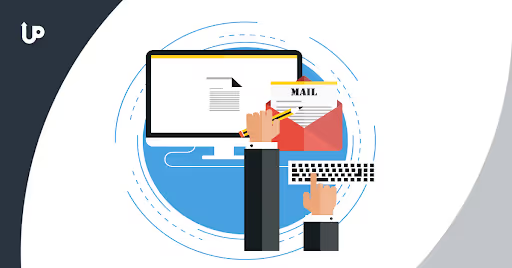Maybe you’ve heard about the term email deliverability, but you’re not exactly sure what it means. As someone who connects with your audience through email marketing, you need to make sure that your messages land successfully in their inboxes.
Because, if your emails aren’t reaching their target recipients, then you’ve only wasted time and money. Even more so, you’ve missed your chance of maximizing your email marketing ROI.
This blog post discusses email deliverability — what it means, factors affecting it, and how to improve email deliverability to drive up your results.
What Does Email Deliverability Mean?
Email deliverability describes the likelihood of your emails arriving in a receiver’s inbox. A good email deliverability rate is 95% and higher; however, every marketer’s goal is to get as close to 100% as possible. On the other hand, poor deliverability means that a huge percentage of your emails have landed in your recipients’ spam folders.
If you’re interested in a deeper discussion of email deliverability, feel free to watch our 1-hour+ video featuring UpViral expert Mitch Aunger and email geek Adrian Savage.
📌Note the difference between deliverability and delivery: Deliverability is whether or not emails reach the inbox, while delivery is when your emails have reached the server. Delivery is actually impacted by your email provider, which is why it’s important that you make the right choice. (Tip: Check that your service provider has an overall delivery rate of 99%.)
Why Does Email Deliverability Matter?
The truth is that deliverability is one of the keys to email marketing success. Here are two major reasons for that:
First off, it helps you to build a long term relationship with your subscribers. Well-written, highly personalized emails won’t work unless people get to read them first.
Secondly, better deliverability equals a higher ROI. It’s pretty obvious — the more inbox folders your marketing emails can reach, the higher the opportunities for people to open them, read them, and convert. (In case you didn’t know, email marketing has one of the highest ROIs in marketing! That being said, the average ROI for email marketing is $36 for every $1 spent.)
What Affects Email Deliverability?
Email marketers can agree that getting 100% of their emails to their recipients is a tough job. It may be hard, but fortunately, there are ways to improve deliverability. Before exploring some best practices, let’s learn the major facts that impact it.
Reputation
This refers to your trustworthiness to subscribers, among other things like your IP address (whether it has been blacklisted), the frequency of your emails, and engagement metrics like opens, click-throughs, unsubscribes, etc.)
Authentication Protocol
Email authentication is critical to deliverability. Through authentication, you can prove to your recipients’ internet service providers that you are a legitimate sender.
Tip: When choosing an email service provider, check that it has the infrastructure to authenticate your emails. The four email authentication protocols are: SPF (Sender Policy Framework), DKIM (DomainKeys Identified Mail), DMARC (Domain-based Message Authentication, Reporting, and Conformance), and BIMI (Brand Indicators for Message Identification).
Email Content
Last but not least is your email content. While the previously discussed factors reputation and authentication protocol depend on your email service provider and your audience’s engagement, email content is something you can control.
Email content refers to your subject lines as well as the copy, links, and images within your message. Creating great, high-quality emails will not only boost your chances of landing in your audience’s inboxes, but it will also positively affect your engagement levels.
How to Maximize Email Deliverability This Year

Avoid the spam folder by following these best email deliverability strategies.
1. Segment your subscribers.
One of the ways to increase your email deliverability is to divide your email list into smaller groups — a technique called email segmentation. So, instead of sending the same email to your entire list, you’re going to send it to those who are likely to engage with that email content.
You can segment your audience based on:
- Geography (where they’re located)
- New subscribers (for this segment, you’re going to focus more on educating them first)
- Subscribers who have or haven’t opened their emails in the last X number of days
- Their product interests
- Purchase history (are they big spenders? have they purchased an X number of times?)
Segmentation will ensure that you send emails your audience actually wants to receive. It’s advantageous for your email list health and deliverability.
2. Have an email preference center.
Email preference centers allow subscribers to pick the type of email content they want to receive and how often to receive it. And if they prefer to completely unsubscribe, they also have the option to do so.
While preference centers have been around for years, unfortunately, not all email marketers implement them. You can think of them as email deliverability tools that give your subscribers control over their experiences. This preserves your relationship with them long term while avoiding unnecessary spam complaints and opt-outs.
3. Prevent hard bounces.
There are two types of bounces: a soft bounce and a hard bounce.
Soft bounces are when your emails don’t get delivered due to temporary reasons like a full inbox and large email file sizes. In such cases, an email service provider will try to continue sending the email over the next few days.
Meanwhile, soft bounces result from permanent reasons such as a fake or invalid email address, email addresses with typos, or a non-existing domain name.
To improve email deliverability, you’ll want to avoid hard bounces which are permanent delivery failures. Here are three tips that help:
- If you’re generating leads through contests or giveaways, make sure to validate the email addresses of all participants. You can use a service called Email List Verify that catches spammers, disposable emails, duplicate emails, and emails that do not exist.
- Use double opt-in. Whenever someone signs up for your mailing list, require them to take the extra step of verifying their account. This does not only boost deliverability, but it also leads to better engagement rates. When people confirm their email address, it means that they were really interested in signing up.
- Authenticate your domain for email sending. A good email service provider will help with the verification process so that the server will know that you’re a legitimate sender.
4. Be consistent in sending emails.
In other words, stick to a consistent schedule. The key is to strike a good balance in which you’re sending subscribers relevant and helpful content without overwhelming them with frequency or being inactive for a long period of time.
You’ll need to figure out the best frequency by doing research and a bit of experimentation. Sure, there will be times when sending more emails would be necessary, such as the holidays. However, aim to stick to a consistent schedule most of the time.
Sender reputation can get affected by sudden drops or spikes in your email sending behavior, ultimately impacting deliverability.
5. Avoid spammy subject lines.
People get a ton of emails and most of them never get read. Good subject lines can increase your open rates, and more importantly, improve deliverability.
One of the ways to ensure that is to avoid spammy subject lines. These subject lines usually contain spam trigger words such as additional income, financial freedom, earn $, and even misleading prefixes like “RE:” or “FW:”.
(Hubspot published a long list of these spam trigger words to avoid in emails. Feel free to check out that resource here.)
Gaining a deeper understanding of your target audience is also another way to write subject lines that match their needs and interests.Related article: 10 Tips to Write the Best Email Subject Lines (with Examples)
Conclusion
Improved email deliverability equals a higher ROI. It’s no secret that for your email marketing campaigns to work, most (if not all) of the people on your list should be receiving your emails.
To increase your performance, start implementing the five tips we’ve shared above.
There’s definitely a lot more you can do to boost the factors affecting deliverability (reputation, authentication, and content) — and the tips discussed here should get your efforts off to a good start. Be sure to also check out the video featured in this article for a deeper dive into deliverability.
If you’re just here to learn more about deliverability and also need help with growing your leads further, we’d be happy to invite you to try UpViral!





.png)